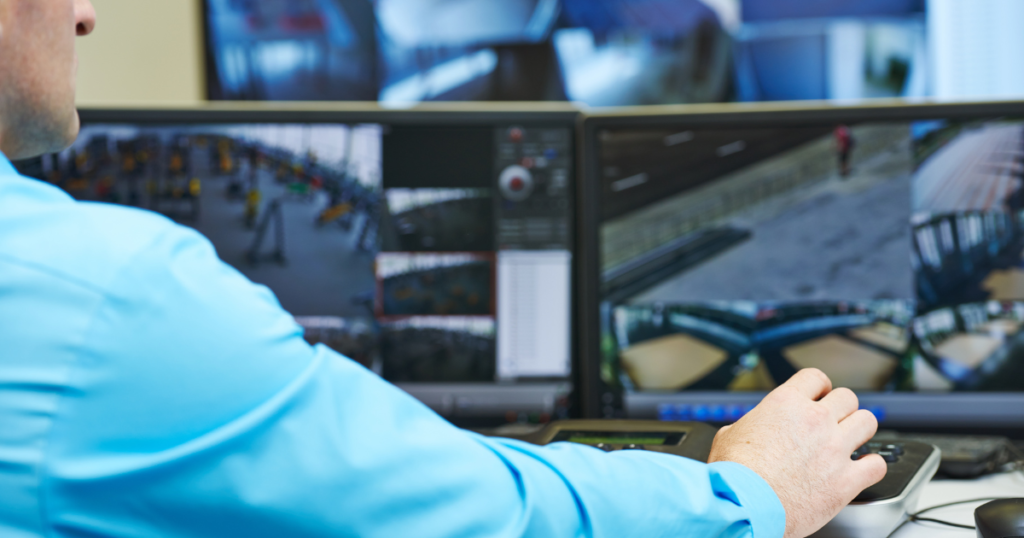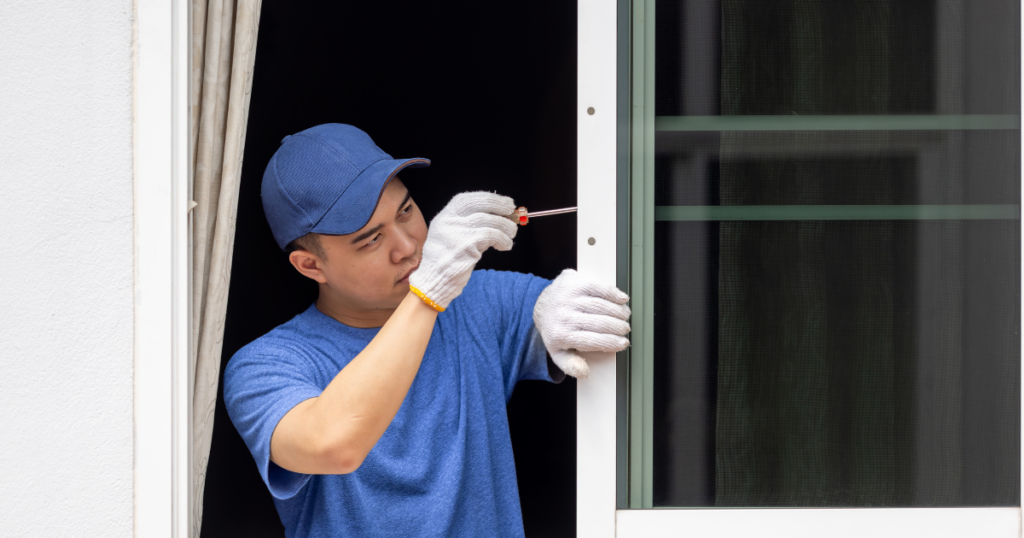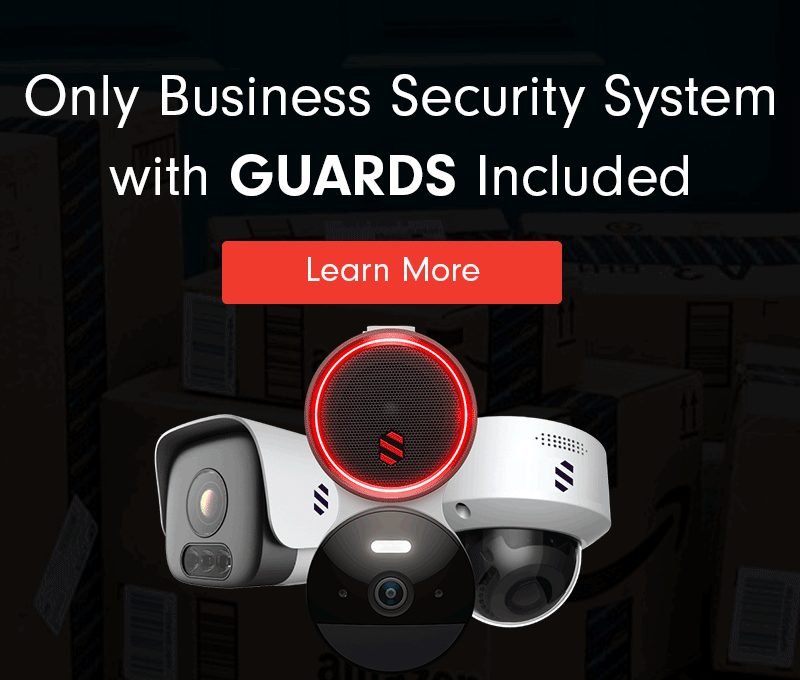The Ultimate Business Security Checklist: Protect Your Business and Assets

Protecting your business starts with a solid plan, and this ultimate business security checklist provides a step-by-step guide to ensure no detail is overlooked. Whether you run a large enterprise or a small brick-and-mortar location, implementing strong physical security measures. From entry points to surveillance systems, it helps safeguard your assets, employees, and peace of mind.
When you own or manage a business, there’s a lot on your to-do list. Hiring, training, and supervising staff. Payroll. Inventory. Quality control. Customer service and dealing with complaints. Marketing and community outreach.
But one of your top priorities should be physical security, especially if you operate brick-and-mortar locations. Simplify the process of securing your shop or office with this business security checklist.
Follow this business security checklist for step-by-step guidance:
☐ Start with a risk assessment
Security isn’t one-size-fits-all. Every business will have its own unique range of vulnerabilities. The strongest security strategy for your business should be built around your specific needs.
Before you can effectively secure your business, you need to understand the potential risks and vulnerabilities. Conduct a thorough risk assessment of your physical location, current security measures, and employee practices.
Here are some key considerations when conducting a risk assessment:
- Current security measures: Take inventory of what security measures are already in place, such as locks, alarms, surveillance system, and access control systems.
- Employee practices: Evaluate the safety protocols and procedures in place for employees. This includes everything from properly handling cash to closing up shop at night.
- Local crime data: Research the crime rates in your area to gain an understanding of potential threats and vulnerabilities.
- Building layout: Analyze the layout of your building to identify possible points of entry or weak spots where security may be compromised.
- Business assets: Identify high-value items or sensitive information that may be at risk for theft or damage.
- Impact of natural features: Assess trees, hills, or water bodies that may affect accessibility or visibility.
Need to complete a security audit? Our team of security experts can help! Request a free security consultation here.
☐ Install a security alarm
Burglars want to get in and get out without being noticed. A blaring siren of 90+ decibels makes that a lot harder by attracting a lot of (unwanted) attention. What’s more, 83% of would-be burglars check for an alarm, proving that it’s a powerful theft deterrent.
Alarms work in conjunction with entry sensors. A simple door or window sensor is tripped whenever someone opens it without also disarming the alarm system.
Here are some tips to install and optimize your business alarm system:
- Position sensors strategically: Since 34% of burglars enter through a front door, 22% through a back door, and 23% through a ground-floor window, you want to secure all, especially ground-level entry points.
- Ensure proper wiring or wireless signal strength: If using a wired system, ensure cables are discreetly hidden and not easy to tamper with. For wireless systems, check the signal strength in all areas to avoid interruptions.
- Regularly test the system: Schedule routine tests to ensure all components, including alarms, sensors, and the control panel, are in working order.
- Change the disarm code regularly: Aim to update the code every 1-3 months. Make sure that pertinent employees know the up-to-date codes to reduce the risk of false alarms.
- Set up alerts and monitoring: Choose systems with remote monitoring via mobile apps and set up notifications for real-time updates on security breaches.
- Maintain backup power: Have a reliable backup power source, such as a rechargeable battery or generator, to keep the system operational during outages.
☐ Reinforce your doors and windows
A locked door will slow determined thieves, but it won’t necessarily stop them. They can still pick the lock or attempt to kick the door in.
You’ll want to fortify your doors with better locks, stronger materials, and a reinforced frame. You might even consider using a jammer or barricade on the inside for an extra layer of protection. Change locks and hand out new keys every few months as a precaution.
It’s also important to secure your windows. This helps protect your assets from smash-and-grab theft, where criminals break into display windows or cases to steal items inside. Consider using either security bars — which can admittedly be unsightly — transparent security film, or the strongest option, virtually unbreakable security glass such as Armor or Riot Glass.
Here are some tips for door and window security:
- Install high-quality deadbolt locks: Deter forced entry by upgrading all exterior door locks.
- Use smart locks or access control systems: Monitor and manage who enters your premises with advanced technology.
- Reinforce door frames and hinges: Strengthen with strike plates and tamper-proof hinges to prevent breaches.
- Use window sensors or alarms: Detect unauthorized openings or break-ins with reliable sensors.
- Add roll-down shutters or protective grilles: Increase window security in high-risk areas.
- Equip windows with secure locks: Ensure all windows, especially ground-level ones, have strong locks or latches.
☐ Use motion detectors
Alarms and upgraded entry points are good, but you need something to indicate if someone has managed to get in. Enter the motion detector.
Standalone detectors are available for $20-30, while others are built-in to security systems or cameras (more on that later). Be sure to install motion detectors in areas with high traffic or valuable assets, but avoid placing them near heating vents, direct sunlight, or moving machinery to reduce false alarms.
Here are some tips to install and optimize your motion detectors:
- Position detectors strategically: Place motion detectors at entry points, hallways, and open spaces where intruders are most likely to pass through.
- Adjust sensitivity levels: Fine-tune the sensitivity settings to prevent triggering false alarms from passersby or environmental factors.
- Use multiple detectors if needed: For larger properties, install multiple motion detectors to ensure complete coverage.
- Test the devices regularly: Perform periodic tests to confirm proper functionality and address any technical issues.
RELATED POST: Introducing FlashBang: A New Security Tech Combining Smoke Bombs & Pepper Spray to Subdue Criminals
☐ Install lighting throughout the property
Just as a siren attracts unwanted attention via sound, a motion-activated light does the same by removing the cover of darkness. Bright lights make it nearly impossible to operate without notice, thereby increasing the risk to any potential thief. And the greater the risk, the less likely they’ll take the chance.
Basic security floodlights for your building’s exterior run about $50 per light, and installation is usually a simple DIY project. Install one over each major entryway and in any areas where someone might loiter or hide, like a parking lot.
While it’s best practice to maintain some continuous illumination inside at all times, you can also convert some interior lights to be motion-activated. This not only deters crime but also helps your bottom line by reducing energy costs.
Here are some tips for security lighting:
- Position lights strategically: Place lights in areas that are most vulnerable, such as entryways, pathways, and blind spots where criminals could potentially hide.
- Choose the right brightness level: Opt for lights that are bright enough to illuminate the area without being disruptive to neighbors or overwhelming for occupants.
- Use clear LED lights: Tinted bulbs or covers can distort colors, making it difficult to identify potential intruders. Clear LED lights provide the most accurate color representation.
- Install lights with timers or smart technology: Timed lights or those integrated with smart home systems can enhance convenience and ensure consistent illumination even when you’re away.
☐ Incorporate CPTED practices into your property design
Crime prevention through environmental design (CPTED) is a security practice that incorporates design or landscaping elements to discourage criminal behavior before it happens. Think well-lit areas, clear signage, and clean landscaping.
In many ways, CPTED is the must-have foundation for any security strategy. Not only do these measures make it difficult for criminals to hide, but they also send a message that your property is well-maintained and secure.
Here are some specific CPTED practices you can incorporate into your property design:
- Maintain clear visibility: Trim overgrown bushes, hedges, or trees that could act as hiding spots for intruders. Ensure all windows and entry points remain visible from the street or neighboring properties.
- Define property boundaries: Use fences, hedges, or other boundary markers to clearly outline your property. This creates a barrier to signal that the space is private.
- Install secure walkways and entrances: Make pathways and entrances stand out with proper lighting and design. Use materials and layouts that guide visitors to appropriate access points, deterring attempts to enter from non-designated areas.
- Eliminate dark corners: Incorporate lighting in areas prone to shadows and darkness, ensuring that the entire property remains well-illuminated at night.
- Add natural surveillance features: Design your property in ways that increase visibility from the inside out. For example, place frequently used rooms or windows overlooking the driveway or backyard. This creates the impression that the property is constantly monitored.

☐ Install security cameras
Security cameras are an essential piece of any business security strategy. They help deter theft and vandalism while giving both customers and employees peace of mind. Plus, they provide useful footage that can help investigate incidents, settle disputes, or gather evidence if needed.
Beyond protecting property, security cameras also promote transparency and accountability within a business. Investing in a good surveillance system is a smart, proactive way to reduce risks and improve how your business operates.
There are plenty of options for business security cameras on the market. You’ll find everything from low-cost options with minimal features like Ring or SimpliSafe to professional providers with integrated surveillance services like Deep Sentinel.
Here’s how to install and optimize your security cameras:
- Choose optimal camera locations: Cover entry points, high-traffic areas, and vulnerable spots around your property.
- Mount cameras at the correct height: Avoid blind spots and tampering by installing cameras at least 8 to 10 feet off the ground.
- Ensure proper lighting for nighttime surveillance: Use floodlights or cameras with infrared night vision for clear footage at night.
- Regularly clean and maintain lenses: Keep camera lenses clean to ensure clear and high-quality footage. A good rule of thumb is to clean your lenses every 2-3 months.
- Test and adjust camera angles: Eliminate obstructions and maximize coverage by properly positioning your cameras.
- Consider remote video monitoring: Use live guard services, like those offered by Deep Sentinel, for real-time response and enhanced security.
RELATED POST: How to Choose Weatherproof Cameras for Outdoor Security
☐ Hire security guards (maybe)
It’s no secret that live security guards are one of the best deterrents money can buy. Their physical presence—armed or otherwise—makes your business much less appealing than an unguarded one.
But is hiring security guards worth it? It depends on your property, security needs, and values. Sourcing, managing, and financing a guard force isn’t possible for everyone. You’ll have to weigh the resource investment against the risk of inventory loss to determine whether hiring security guards is right for your business.
For businesses seeking a more accessible and effective alternative to on-site security guards, Deep Sentinel offers a cutting-edge solution. With real-time video monitoring powered by artificial intelligence and live security agents, Deep Sentinel provides proactive protection that can deter threats before they escalate. The system actively monitors your property 24/7, identifying potential risks and allowing agents to intervene in seconds, all without the logistical challenges of hiring and managing in-person guards.
Check out Deep Sentinel in action:
Deep Sentinel’s Virtual Guards are a fraction of the cost of on-site security guards and have several advantages. The wireless surveillance camera system comes equipped with night vision, a motion sensor, a 104db siren, LED floodlight, and 2-way audio. The PoE camera system comes equipped with 2k and 4k camera options, starlight technology, and 2-way audio.
If you want live eyes on your business every moment of every day, Deep Sentinel is the best answer. It’s like having all of your security devices plus a guard team wrapped up in one powerful package.
☐ Train your employees on security protocols
Giving your team the knowledge and tools to spot potential threats and handle them effectively doesn’t just protect your business—it also fosters a culture of awareness and responsibility.
Security issues can pop up at any time, and well-trained employees become an extra layer of defense, confidently managing situations before they get out of hand. Clear protocols also keep things consistent, cutting down on confusion and reducing risk. Investing in security training isn’t just a good idea — it’s a proactive way to protect your people and your business.
Here are some tips on how to ensure your staff can uphold security protocols:
- Perform background checks: Conduct routine checks on all new hires to ensure a trustworthy team.
- Train on opening and closing procedures: Teach employees proper protocols to secure the building at the start and end of the day.
- Control access to keys and passcodes: Decide who should have access to ensure security.
- Create an emergency response plan: Establish clear responsibilities, meeting places, and protocols for emergencies.
- Show key safety locations: Point out first-aid kits, fire alarms, extinguishers, and phone lists to all employees.
- Promote safe exits: Encourage staff to leave the building in pairs or small groups, especially at night.
☐ Follow a regular maintenance routine
Proper maintenance of your security equipment is crucial to ensure everything functions when you need it the most. A proactive routine helps identify and fix potential vulnerabilities before they can be exploited.
Here are some ways to implement a consistent maintenance schedule for your security systems:
- Inspect security cameras regularly: Check for any signs of damage, ensure lenses are clean, and verify that cameras have a clear view of critical areas.
- Test alarm systems: Conduct monthly testing to confirm alarms are responsive and connected to the appropriate monitoring services.
- Maintain locks and access controls: Replace faulty or damaged locks and perform routine checks to ensure access systems, like keypads or card readers, are functioning correctly.
- Check lighting: Ensure all outdoor and indoor security lights are operational to eliminate dark areas that could encourage unauthorized access.
- Schedule professional servicing: Hire licensed security professionals to perform comprehensive inspections and maintenance at least once a year.
- Keep records of maintenance checks: Maintain a log of completed inspections and repairs for accountability and future reference.
☐ Consider other security tools for unique vulnerabilities
There is no end to the security enhancements you could make at your business to reduce criminal activity. This business security checklist is just the start. As you evaluate your budget and your needs, also consider:
- Redundant power sources for all security devices
- Visitor and vendor logbooks
- PA system for large buildings
- Safe or vault with an intrusion alarm, especially in cash-heavy industries
- Panic buttons that employees can press in an emergency to raise the alert silently
- Scanners at main entrances that can verify employee ID badges or biometrics (e.g. fingerprints)
- Fences and lockable gates around your perimeter or parking area
- Metal detectors and/or X-ray machines at entry points
Keeping your business safe starts with a proactive security strategy
Enhancing your business’s security may feel daunting, but taking proactive steps makes all the difference. Begin with foundational measures, expand your strategy, and customize solutions to your specific needs. By staying proactive, you create a safer environment for employees, customers, and assets. This is because a little prevention goes a long way.
Protect your business with Deep Sentinel
For businesses seeking advanced protection, Deep Sentinel offers AI-powered video monitoring combined with live security guards. This proactive solution detects threats in real time and intervenes before incidents escalate, providing unparalleled peace of mind. Protect your assets, reduce theft, and simplify security management with Deep Sentinel’s business security systems.
Need a Solution that Prevents Crime?
Deep Sentinel is the only security technology that delivers the experience of a personal guard on every customer’s home and business. Visit deepsentinel.com/business or call 833-983-6006.


